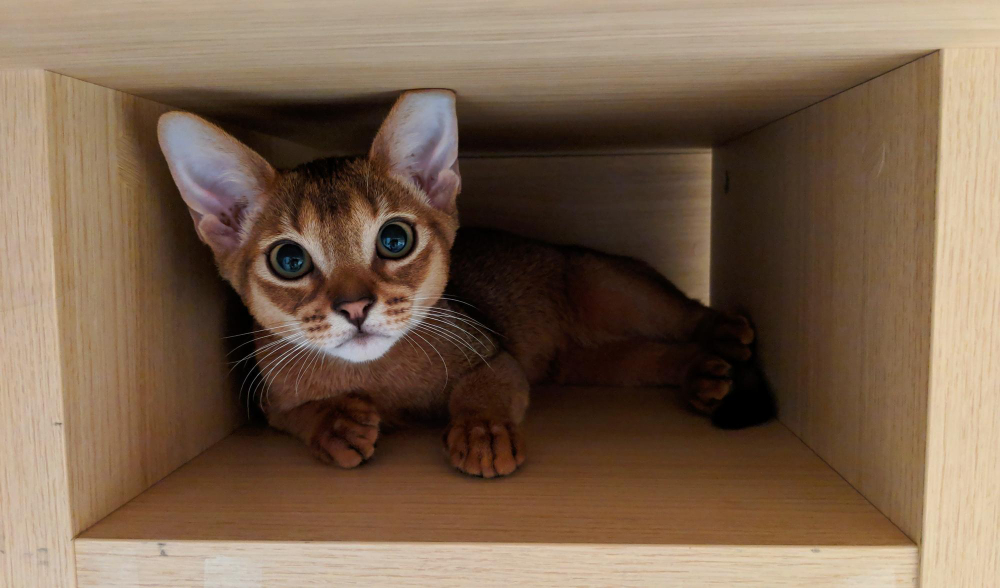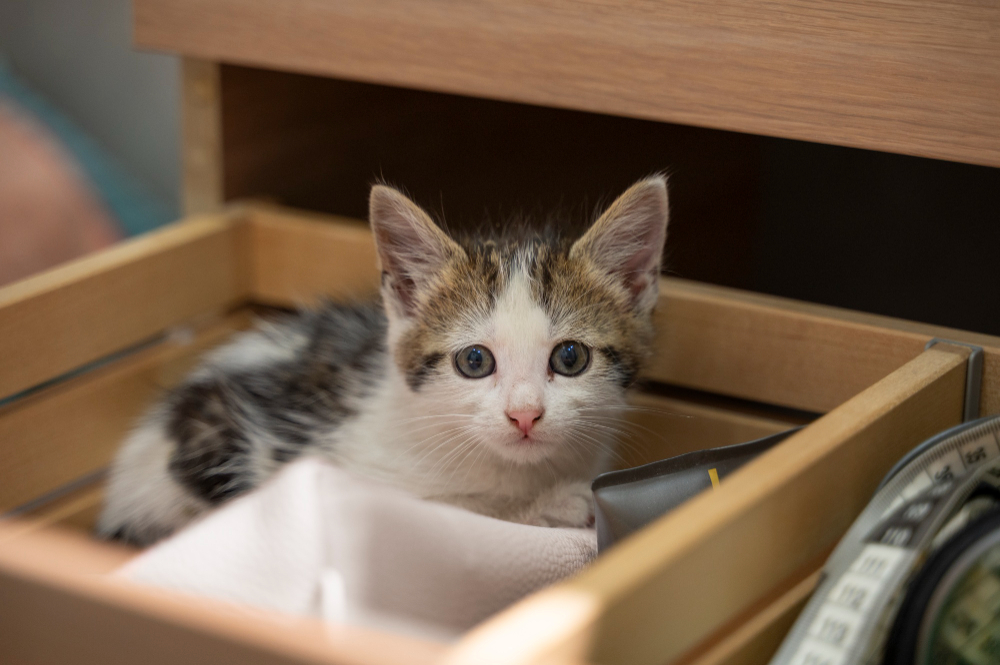An Adventure of Abyssinian Cat Exploring the Cardboard Tunnel. Abyssinian Known as one of the most energetic and intelligent cat breeds, the Abyssinian thrives on curiosity and play. This isn’t a cat that lounges quietly all day; it’s an explorer at heart. Picture your Abyssinian crouching low, tail lifted in excitement, slipping into a cardboard tunnel with ears perked and paws moving like soft whispers on the floor. Those bright, alert eyes aren’t simply watching they’re planning the next move. Every rustle, shadow, or jingle becomes an invitation to play.
This boundless curiosity is what sets Abyssinians apart. They crave stimulation, puzzles, and interactive games that challenge both body and mind. Left with nothing to explore, they can grow restless so owners quickly learn that keeping an Abyssinian entertained isn’t just fun, it’s essential for their well-being. Whether it’s a feather wand, a puzzle feeder, or even the box the toy came in, these cats turn every moment into an adventure.
Why Abyssinians Love Tunnels
Abyssinians are agile, curious cats with quick minds and faster feet. Tunnels tick all their boxes: a place to hide, chase, pounce, and ambush. The rustle of cardboard adds sound and texture, which keeps them interested. Short bursts of play suit this breed perfectly, and a tunnel invites repeat “runs” throughout the day.
Benefits of a Cardboard Play Tunnel
- Natural hunting practice: darting in and out builds confidence and coordination.
- Daily exercise: quick sprints help manage energy and weight.
- Stress relief: a safe “runway” reduces boredom and frustration.
- Ambush games with you or another cat: perfect for wand toy play and gentle chase.
Picking the Right Tunnel (Size, Shape, Features)
- Diameter: aim for 25–30 cm so your cat can sprint without brushing sides.
- Length: 60–120 cm works well; add a side exit every 30–40 cm to prevent cornering.
- Peek holes: 5–7 cm “spy” holes spark curiosity and let light in.
- Grip and stability: place the tunnel on a rug or mat so it won’t slide.
- Whisker comfort: smooth openings; no sharp edges, staples, or exposed tape.

Safe Materials and Build Tips
Cardboard is light, warm, and claw-friendly. Use non-toxic glue, avoid staples, and reinforce seams with cloth tape on the outside. If you decorate, keep it simple and odour-light—strong scents can put cats off. Check the tunnel weekly for soft or chewed spots and replace when worn.
DIY: Cardboard Tunnel in 10 Minutes
- Roll a sturdy box panel into a tube and tape the outside seam.
- Cut one or two side exits; round the corners.
- Add 2–3 small peek holes along the top.
- Line the entry with a folded cardboard rim for strength.
- Anchor on a rug; tuck a crinkle ball or sprinkle a few treats inside.
Training Your Abyssinian to Use the Tunnel
- Lure and reward: toss a treat through; mark the moment they enter with praise.
- Chase the toy: drag a wand toy in a figure-eight pattern through the tunnel.
- Build duration: cue “through,” then reward on exit. Add distance and speed over time.
- Rotate games: some sessions are sprint races; others are slow “hide and find.”
Enrichment Routine That Works
Two short play blocks 10–15 minutes morning and evening—fit an Abyssinian’s rhythm. Rotate toys weekly: day one wand play through the tunnel, day three treat trail, day five “peek-a-paw” through the holes. End each session with water, a small meal, or a calm cuddle to bring the energy down.
Multi-Cat Households
Place two tunnels or add extra exits to prevent blocking. Start play in parallel—each cat gets a toy path—then merge games briefly. Reward calm turns, not pushy ambushes.
Safety Notes
Supervise chewers. Small bits of cardboard aren’t ideal to swallow. Replace frayed pieces, and keep the tunnel dry damp cardboard collapses and traps odours. If your cat seems unsure, shorten the tunnel, widen an exit, and add a trail of high-value treats.
Health and Wellbeing Angle
Regular tunnel sprints support muscle tone and joint health. Mental work planning a chase or timing a pounce—helps curb over-stimulation that can lead to nipping or nighttime zoomies. Pair play with a balanced diet and routine vet care for eyes, teeth, and joints.
FAQs
What tunnel size is best for an Abyssinian?
A 25–30 cm diameter with at least one side exit keeps movement easy and safe.
How often should I play tunnel games?
Short daily sessions—morning and evening match their natural bursts of energy.
My cat is nervous. How do I start?
Shorten the tunnel, open a side exit, and scatter a few treats inside. Celebrate any step forward.
Is cardboard safe?
Yes, when clean, dry, and free of staples or loose tape. Replace if it softens or tears.
What toys pair well with tunnels?
Feather wands, crinkle balls, and light ribbons. Avoid heavy toys that can wedge inside.







